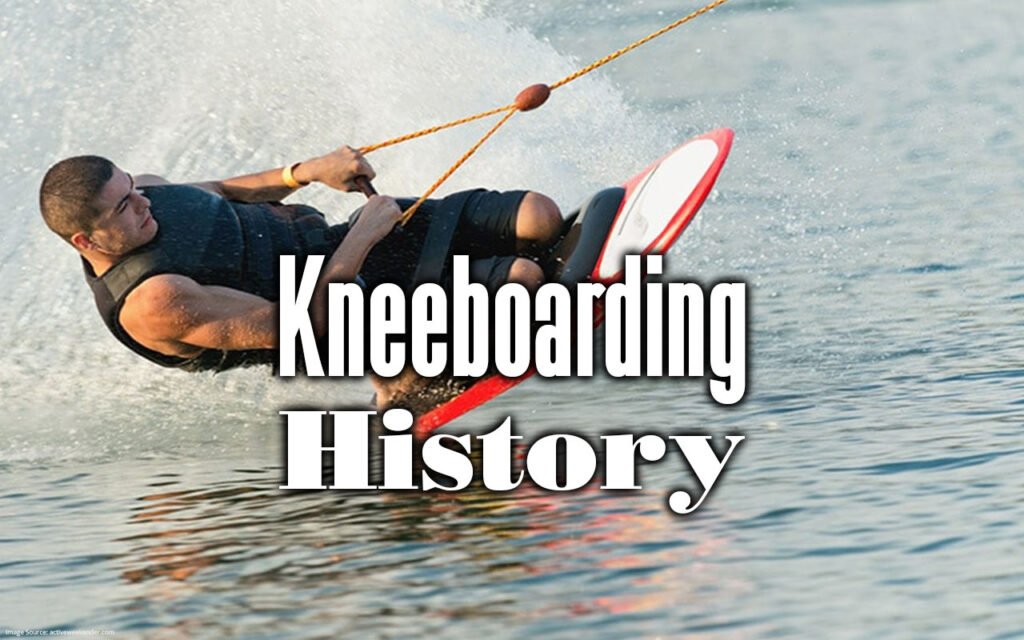The history books say that kneeboarding was invented in Southern California, the birthplace of many great board and water sports.
Kneeboarding is a popular alternative to three-event water skiing, wakeboarding, and barefooting. A kneeboard is typically included with a pair of combo skis in most recreational boats. However, the sport has a competitive following.
Kneeboard athletes compete in tricks, slalom, and expression session events. The six buoys are positioned in the same way as a traditional racecourse in slalom. Tricks are performed in two 20-second periods, each of which is divided into technical and subjective portions. A wakeboard event is similar to a kneeboard expression session in that each pass is scored subjectively for style points.
The origins of modern knee boarding may be traced back to the Southern California region, where surfboard enthusiasts attempted using their handcrafted “belly” and “knee” boards behind boats about 35 years ago.
The surfers in other parts of the country soon discovered the new idea of “surf-skiing.” In early 1965, the Inland Wake Board was developed in Downey, California, and was being sold through Abercrombie and Fitch stores in the East, South, and West.
Several California entrepreneurs were designing a kneeboard especially for towing behind a boat during the late 1960s and early 1970s. John Taylor invented the blow-mold plastic glide slide, while Bud Holtz developed the fiberglass-wrapped Knee Ski with Matt Murphy. Glide Slide was the biggest, though the short-lived, commercial success of the two.
Danny Churchill, a skier who had previously worked for Taylor, received funding to establish the Portugal Company and subsequently purchased Glide Slide out of bankruptcy. Churchill redesigned the board, used rotational molding, and named his product Hydroslide. In 1982, Kransco purchased the company. According to Churchill, water-ski manufacturers began developing kneeboards in response to demand; a million have been sold since the products first appeared on store shelves.
The old kneeboards were far heavier and more inconvenient than the boards used today. They resembled large teardrops, with thin knee straps, flat bottoms, and slippery rubber knee pads. Today, the shape has changed. The bottom is shaped to enhance performance, the knee strap is large and aids in maintaining the skier on the boards, and the pads are tough enough to prevent knee damage.
A number makes kneeboards of the country’s top water-ski manufacturers come in various colors, shapes, and sizes. Beginners and more experienced skiers will enjoy the numerous boards available.
Kneeling as a competitive activity is a relatively new sport, having developed over the past 17 years. In 1983, a group of traditional waterskiers from the lower Midwest banded together to form a club that would encourage kneeling as a competitive sport. The American Kneeboard Association (AKA) was founded, and they staged slalom and trick events based on existing US Water Ski competitions. Two other events, crossings, and turns, were tried to spawn but have since become a “novice only” program.
Interest in competitive kneeboarding rose dramatically when word got out about the sport’s popularity. There are thousands of competitive and recreational kneeboard skiers throughout the world today.
Several changes have taken place since the formation of AKA in 1983. The association has become internationally recognized as the world’s leading authority on competitive kneeboarding. It is governed by the elected board of volunteer directors, who meet on a regular basis throughout the year to talk about tournaments, new methods, and rule changes. The American Kite Association became an authorized member of USA WaterSki, the national governing body for water skiing, in January 1988.
Other Related Articles:
Best Scented Reusable Water Reveal Activity Pads
Inflatable Paddle Boards For Every Water Sport Enthusiast
Best Inflatable Floating Drink Holders






